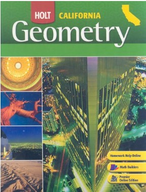Algebra The large rectangle has length a + b and width c + d. Therefore, its area is (a
Chapter 1, Problem 31(choose chapter or problem)
Algebra The large rectangle has length a + b and width c + d. Therefore, its area is (a + b)(c + d). a. Find the area of each of the four small rectanglesin the figure. Then find the sum of these areas.Explain why this sum must be equal to the product(a + b)(c + d). b. Suppose b = d = 1. Write the area of the large rectangle as a product of its lengthand width. Then find the sum of the areas of the four small rectangles. Explainwhy this sum must be equal to the product (a + 1)(c + 1) . c. Suppose b = d = 1 and a = c. Write the area of the large rectangle as a product ofits length and width. Then find the sum of the areas of the four small rectangles.Explain why this sum must be equal to the product (a + 1) 2 .
Unfortunately, we don't have that question answered yet. But you can get it answered in just 5 hours by Logging in or Becoming a subscriber.
Becoming a subscriber
Or look for another answer
